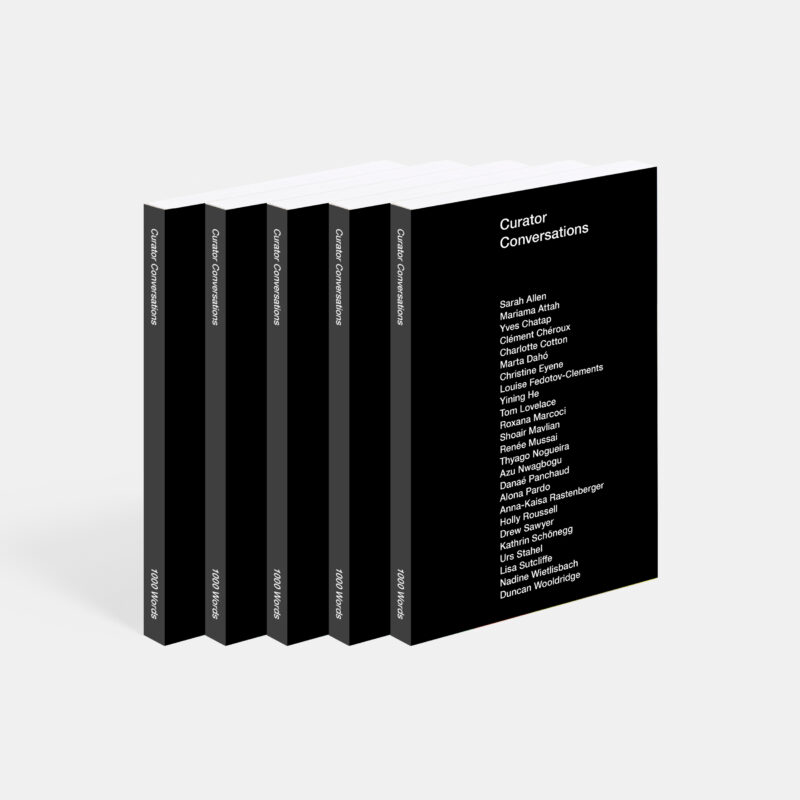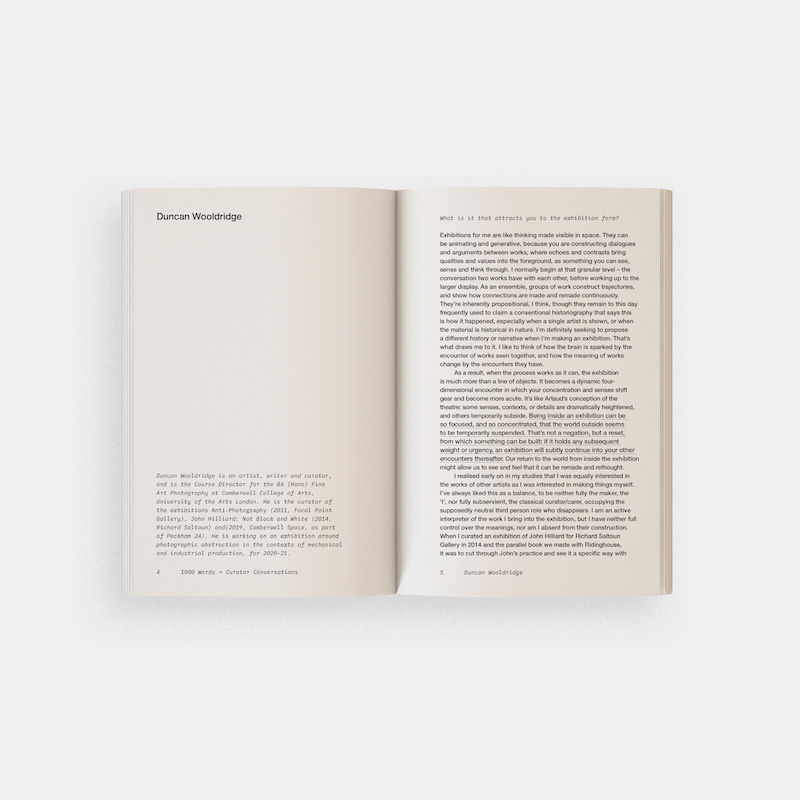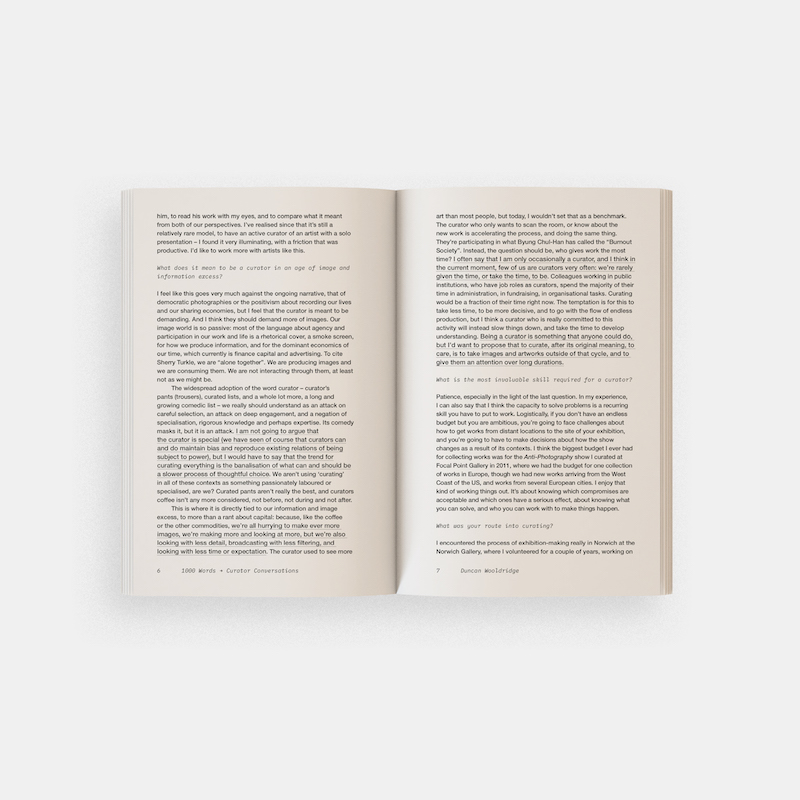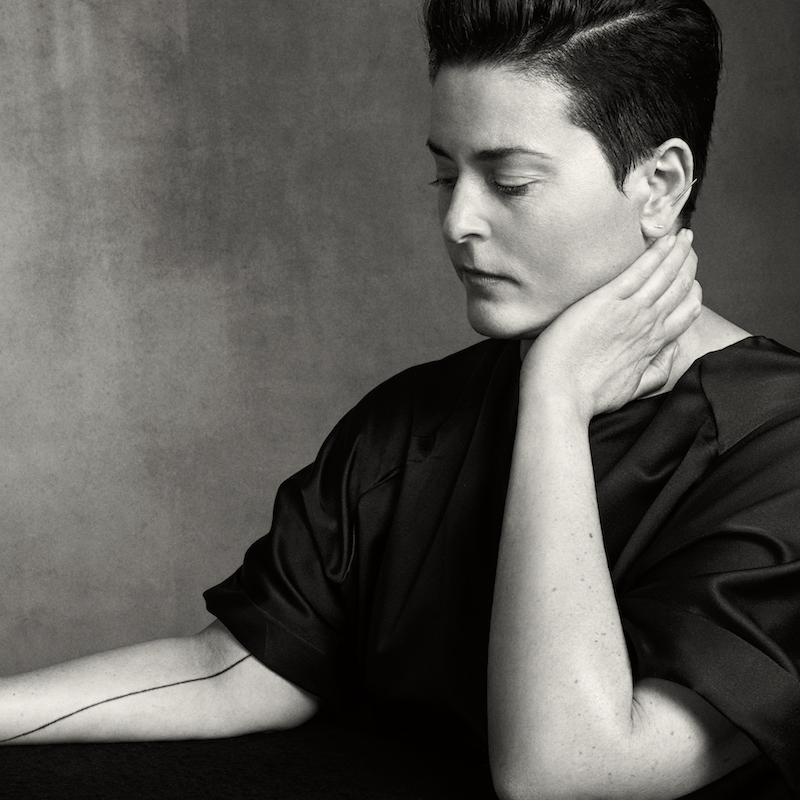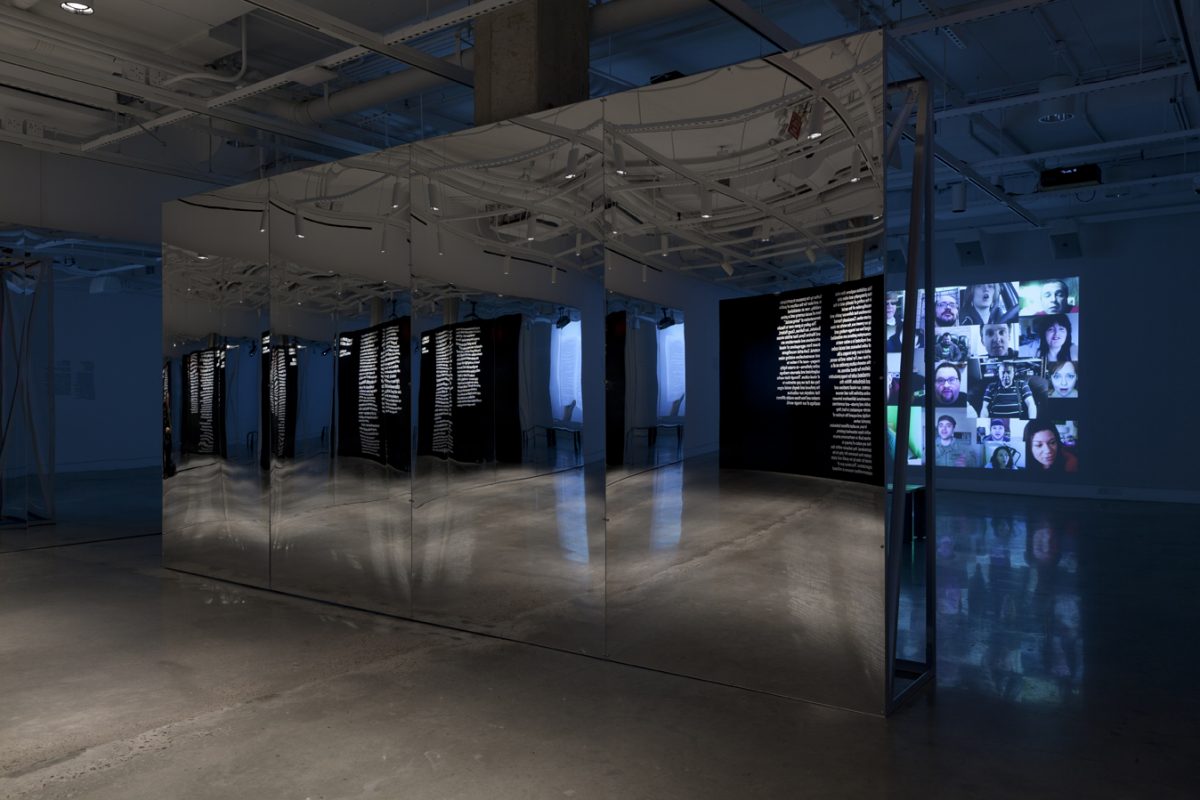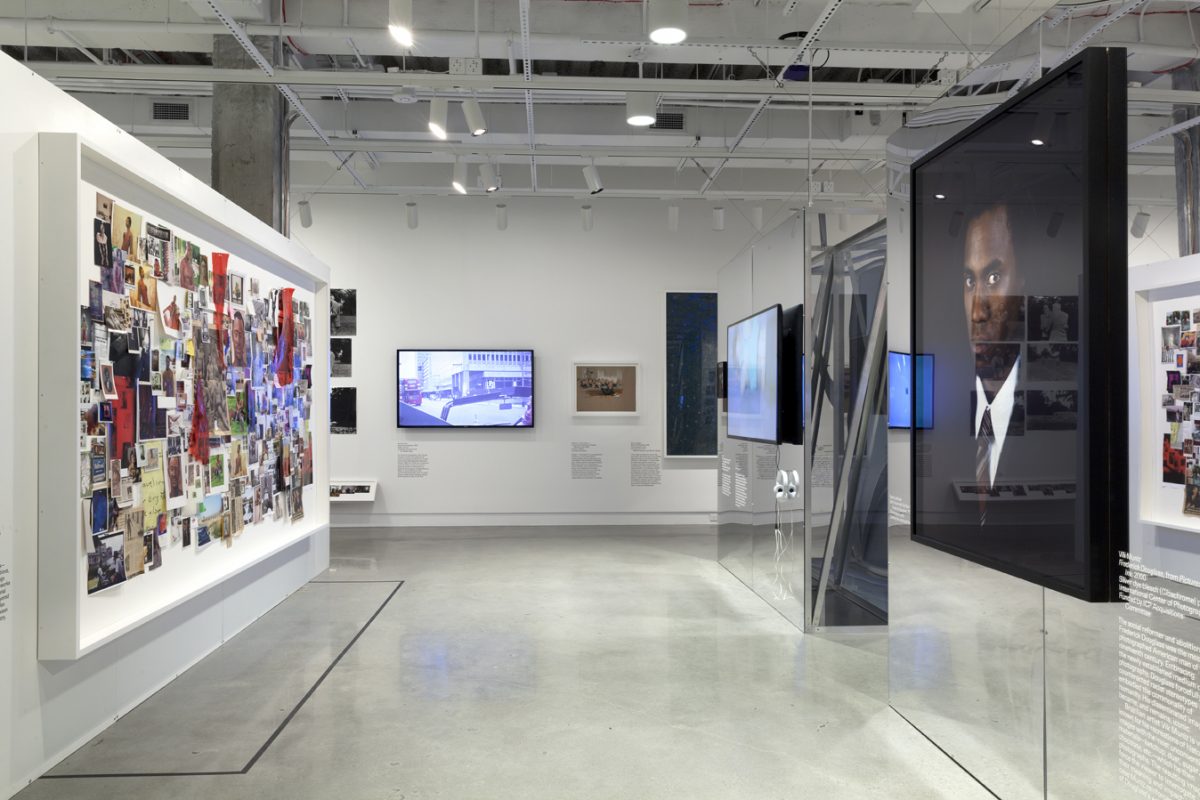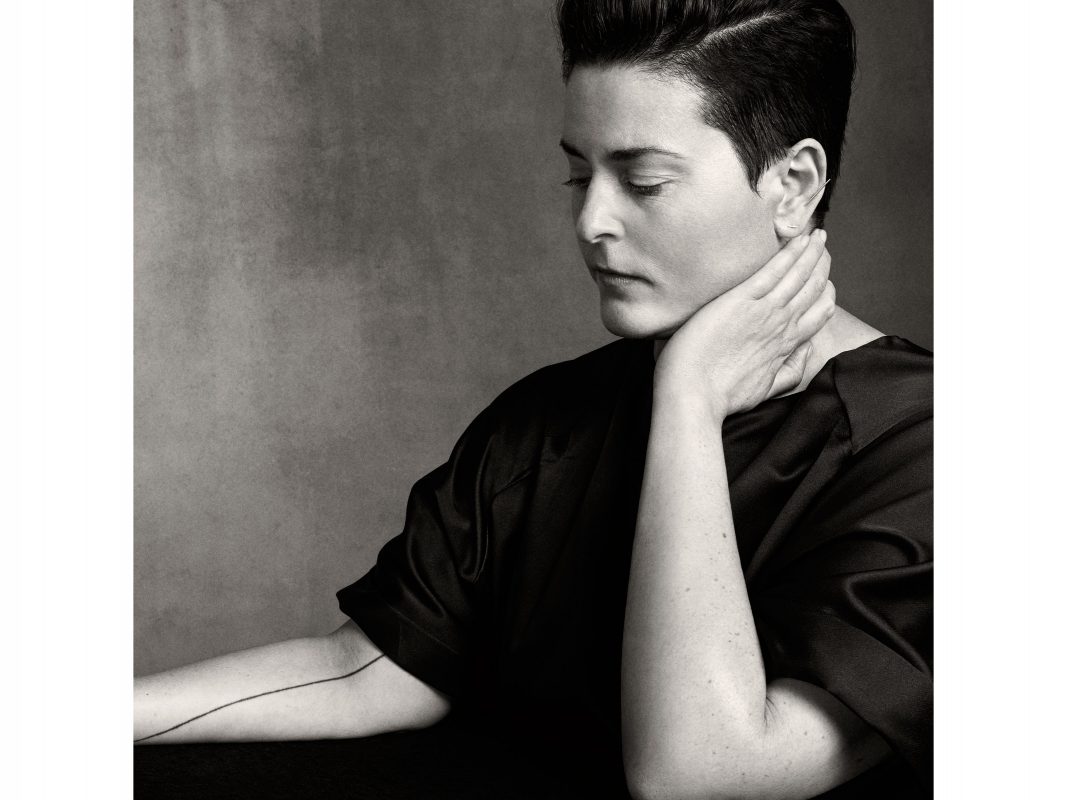Charlotte Cotton
Curator in Residence at International Center of Photography (ICP)
New York
For the latest addition to our Interview series, Diane Smyth catches up with the newly-appointed Curator in Residence at the International Center of Photography (ICP), Charlotte Cotton, on the occasion of releasing her new publication with Aperture, Photography is Magic. They discuss what makes a great photobook, process-led aspects of photography curating, the role of institutions such as galleries and museums now, and how digital imaging and distribution has shifted photography.
Diane Smyth: In your article Nine Years, A Million Conceptual Miles, you reference the challenges that digital imaging and online distribution pose for traditional museums and institutions. Hasn’t photography always had a complex relationship with institutions though? How has digital changed that?
Charlotte Cotton: For most traditional institutions (and also the development of photo-centric non-profit spaces), the framing of photography as a cultural subject began in earnest in the 1970s. I agree that the edges of that frame – how to include the stories of non-art photographic practices as well as reflect the movements of contemporary art photography – have been present throughout. In the main, the traditional institutional approach has been to single out a handful of photographers and their oeuvres to epitomise their respective genres and represent an era. The biennial and triennial formats have become an established way to look at the most contemporary aspects of photography in a more en masse way, often without much of a proposal beyond the practitioners’ newness and collective energy. I think that one of the reasons I have enjoyed curating and writing about fashion photography is finding ways to give cultural meaning that genuinely seeks to represent its character, one that exists outside of the curatorial conventions used by traditional institutions.
The first part of your question about whether ‘digital’ has changed the dynamics of institutional appraisal of photography is answerable in a number of ways. I do think it’s possible for photography departments in museums to continue along the route of collecting photographic prints and folding the twenty-first century climate into an established history. There are, as you know, many photographers who are creating bodies of work with museums and collections as their end goal, with some choosing online culture as their subject, not unlike landscape and portraiture in the late twentieth century.
But, for me, the bigger questions are about the relationships museums and galleries have with the image environment at large, and on terms not set by institutions themselves. In an age where the defining of photographic practice is happening much more broadly than in the late twentieth century, I think it deserves something of a rethink of what photography departments and organisations can meaningfully provide, given that they are neither the final home nor taste makers of the bulk of current ideas about photography. In practical terms, that’s about putting more curatorial thinking into cultural forms beyond exhibitions and catalogues.
DS: How can photographers fund their work in this shifting landscape? Is the art market still an alluring prospect because of the possibility of selling self-generated projects?
CC: I think this is such a personal dilemma – about how you fund the work you want to do. For each of us, it’s a constant dynamic of checking in with our own reality. I have become very conscious of how I differentiate between my work and my labour of late, no doubt influenced by the undeniable collective feeling that working life is inherently precarious and redrafts our learnt behaviours about how to have a sustainable creative life. I tend to think of my labour as the work I can do because I have a proven track record of expertise and it is to be undertaken only when there are acceptable terms and conditions that make it transparently worth my while. I actually like to labour and have projects where I am playing just a part in something much larger than my own endeavours. I also like to be useful. My work is something that I ‘own’ and I’m unlikely to be directly paid for it because it needs to be on my own terms, often as a kind of counterargument to prevailing models and, hence, not easily packaged. The labour/work distinction is helpful for me at the moment, and maybe for others working in creative industries, especially for when I get the nagging feeling that we are ultimately subsidising an industry’s mechanics on a somewhat false premise that we have a career in the twentieth century sense.
DS: How do you think the current focus on photobook publishing fits into this new landscape? Is it a bubble?
CC: Photobook publishing is a really creative and energised area of photographic practice and I don’t think that energy is a bubble, exactly. It’s not a market bubble in the sense that the business plan for making and disseminating a book doesn’t tend to have a profit line! But I actually think that’s why photobook publishing is so alive and well – because, like visually-led social media, there is not a business model, it’s pretty much driven by ambitions and creative competition between makers. I think the conversation that is happening between makers who are self-publishing and small presses is an absolute joy because it has spectacularly failed to be co-opted into conventional publishing business models. Long may it continue!
DS: What makes a great photobook? Have you seen any recently that particularly impressed you?
CC: The photobooks that resonate with me the most are ones where I can see and sense that an idea is truly manifest in the form. I don’t think that there are many really solid ‘shoulds’ in independent publishing so my attention is especially drawn to photobooks where I feel every element is an active choice by its makers and is deployed in aide of the idea. I sometimes feel a bit sad when I see a great idea muted by the conventions (in design and production values) that permeate the landscape of contemporary photobooks. I’m someone who appreciates not being given too much of a helping hand by a book’s design and prefer ones that provide its own encounter, not one spelled out by half title pages and forewords, et al. Making a great photobook that defines its own terms is really hard! My viewing preferences mean that I am impressed in lots of different directions – from trade books that make a departure from the expected format right through to a zine I may have stumbled upon or some oblique curation within small presses.
DS: Your exhibition Photography is Magic at Daegu Photo Biennale in 2012 and your edit of CPhoto 7, Photographicness, published in 2014 centred on a new, Post-internet generation of photographers. How has digital imaging and distribution shifted photography? And what would you say to those who say this work focuses on form at the expense of, say, emotional connection or documentary campaigning?
CC: I’m responding to your questions just as my book with Aperture – Photography is Magic – has been launched. It has been my attempt to think deeply about how Post-internet practices are meaningfully recalibrating the idea of the ‘photographic’. I use the analogy of close-up magic (conducted in small venues, with a close circle of viewers) to talk about what I see as an artist-led (another small circle of viewers) set of prospects for photography. The fundamental connection is, perhaps surprisingly, about empathy and the aim to trigger ‘magic’ in the imagination of the viewer. Magic is not held in the mechanics or craft of sleight of hand, but in the responses it provokes imaginatively, in real time. A magician practices close-up magic flourishes using a three-faceted mirror, developing their routines from the perspective of the viewer – using the viewer’s pre-existing knowledge of how the visual world works – and this is what I see happening in the working practices of the artists included in my book. All of these artists seem to me to be creatively grappling with where their authored practices move and can be situated in the increasingly large and shared terrain of image-making.
What Photography is Magic is not is a survey of photography’s twenty-first century materiality – from revivalist analogue techniques to 3-D rendering. I do think materials are demonstrations of active choices but I’m not satisfied with the conclusion that a shifting set of values for photographic materials is the full explanation for the revisions that are currently taking place within cultural ideas about photography. I don’t share the view that making an analysis of Post-internet practices is about privileging form over subject, nor that there is some sort of photographic weighing scales that puts contemporary art photography and documentary photography (seen as genres, which I also don’t hold to) that have to be balanced or can cancel each other out. I’ve written about this before, that I see this as an ‘either/and’ rather than an ‘either/or’ epoch of practice.
DS: In your work on P2P at PhotoEspaña 2014, for which you curated a show called Contemporary Practices in Spanish Photography with 30y3 team, Iñaki Domingo and Luis Díaz and also for the show Photography in Everyday Life with Karol Hordziej as part of the Experimental Section of Krakow Photomonth 2012, you created installations in which photographers and visitors could make work, rather than just showing finished artworks. Is process something you’re keen to reveal?
CC: I’m a big fan of iterative and time-sensitive processes! It is ultimately about the types of relationships I want to create with viewers. This is, of course, absolutely nothing new within the story of conceptual and contemporary art but perhaps an aspect that photography curating didn’t fully take on until Web 2.0 and the added context of much more process-led and active frames for cultural viewership. Both P2P and Krakow Photomonth projects were collaborations with younger curators and this inevitably led to more conversational curatorial forms. In both instances, the exhibitions were visual manifestations of not only creative processes that got us to that point but also the beginnings of new ideas that would ripple out afterwards, so the exhibition form needed to be a mapping of an iterative process but also a prompt for something in the future. Both projects were developed at a time when I was on quite an intense learning curve and I didn’t feel that I wanted to curate as if I had a fully definitive and complete point of view on any aspect of photography. It’s not that I can’t imagine curating in a classical way ever again but I have been much more interested in being a participant in thinking and modestly acting out what feels most pertinent to the working groups that I’ve been lucky enough to be part of.
DS: At LACMA where you led the photographic department from 2007-09 you also worked on projects, which focused on live performance and discussion rather than displaying artworks. How do you see the role of institutions such as galleries and museums now?
CC: Working at LACMA gave me immense creative freedom, thanks to the support of the museum’s über-director, Michael Govan. His vision for LACMA has been to create a ‘town square’ for Los Angeles and my forays into envisioning that (with the Machine Project Field Guide to LACMA and the Fallen Fruits’ EATLacma) were some the most incredible experiences of my life. So much of this non-object-based emphasis in my curatorial work was about Los Angeles and its critical mass that is centred in the amazing art schools and artist-to-artist dialogues, and spawned Southern California’s rich history of conceptual art practices. I also greatly enjoy working in institutions at points of change – where creative risks and new paradigms can be developed because the institution actively wants to rethink its role and modalities.
Words Without Pictures was a website (designed by David Reinfurt and edited by Alex Klein) and series of live events. I liked the way we made a connection between what was locally important – and the emergent issues being explored by one community – with the online and global (although mainly within the US) discussion that ensued. I conceived of the project as a year-long discussion that would be summarised in a book that would be useful for more discussions in classrooms, published by Aperture in 2010. I felt like a year was the maximum amount of time before the project would institutionalise itself and become too knowing about its own behaviours. If I had stayed at LACMA, I’m sure we would have taken what we had learnt from the process and thought about the next version, one that might well have blurred the lines between traditional ideas of museum and university with another ‘journey’ that everyone was welcome to join us on.
DS: You started off working within the institutional framework as a curator at the V&A but, it seems, have increasingly moved away from this kind of role. I was interested to see that you’ve recently joined the photography agency, M.A.P, traditionally a way for freelancers to find projects…
CC: One very wise ex-colleague at the V&A made the observation that my career has been in reverse. I worked at the V&A for twelve years until 2004 and since then I have worked mainly in the US in different roles including at a commercial image-making agency, as a visiting scholar at a number of universities, at museums in quite heightened moments of change, and as a freelance consultant, curator and writer. I actively enjoy deciding where the best vantage point and place of new discoveries is going to be. It might be misguided but it gives me a greater sense of a self-determined journey in life than one that is pinned to the health and generosity of one institution full-time. I actually think that my critical faculties are made sharper and more pluralistic by the range of experiences I’ve sought out and I do genuinely believe that the absolute best that a creative life can be is constantly generative.
Leaving the V&A was very much bound up with my desire to know what would happen to me once I stopped being, ‘Charlotte Cotton at the V&A’, and to lose the weight of a lofty title, seemingly from the outside something that I could have held on to in perpetuity, as-well-as the projections and expectations that come with that responsibility. I sometimes berate myself for having a life that’s not overburdened with the trappings of middle age and I do occasionally get worked up about where I will be in a year’s time. But then I remember that to not think about these issues is not only a fool’s paradise but to run the risk of missing out on the real journey into one’s future.
DS: What do you think about the growth in MA courses focusing on curating as a career choice or profession? Has the term ‘curating’ become diluted?
CC: Curating has become an overstretched term for sure. But I can still remember a time when I would say that I’m a curator and people would ask me what that was! So I am all for curating becoming an active verb to reflect the way that this is now a recognised dynamic and modality in lots of creative careers. I think the graduate qualifications in curating suffer from the same issues as MFA programmes right now. Once a specific aspect of a creative practice becomes an established ‘career’ qualification, one with professional standards but without the back up of there being a buoyant ‘profession’ to match it directly, I think it becomes complex. I know that if I was 22 right now, I’d be experimenting, interning and collaborating in the real world to refine my skills as a curator rather than investing in a graduate qualification.
DS: What advice would you give a fledging curator?
CC: I think anyone who has already made a commitment to learning the craft of curating knows this but for what it’s worth, I’d suggest the following: Curate the things that you actively want to explore and express – whether that is overarching themes and behaviours that you want to dig deeper into or creating a vantage point onto your generation of practitioners.
Curating is so much about who you want to communicate with and creating a thoughtful invitation to whoever they are. I’ve enjoyed curating projects that are for very specific audiences and they tend to be much younger than me – I think I will always be grateful to the curators (who I didn’t know existed at the time) whose exhibitions I saw when I was just entering adulthood and they validated me and my passion for culture. I also really appreciate the training that the V&A gave me to think about your audience as everyone who was passing through the museum on a given day.
When I was an intern at the V&A, I earned money working in a hotel restaurant and planning out the minor details of wedding receptions. I think I learnt as much about how to make an environment inviting and how to observe people from the hotel as I did from the V&A! Be confident that any fear you might have of losing sight of your own authorship in collaborative curatorial situations is unfounded. Whether you are the curator within a project relying on a range of skills or working with other curators, if you share an aim, something amazing and substantial will happen. ♦
Image courtesy of Charlotte Cotton. © Christian MacDonald

